Among the mountain-dwelling Igorots, headhunting was an institution. For these indigenous Philippine tribespeople, headhunting had religious significance. The passage into manhood was marked with the taking of a head, and as a bonus, the severed head was needed for rituals to ensure a full harvest and fertility for the tribe.
When a head was taken, it was obliged for the menfolk of the aggrieved tribe to exact retribution. To prevent constant warfare, the Igorot had ritual diplomatic protocol to enact before resorting to hostilities. The angered could be appeased with respectful compensation – if the gifts were refused then warfare would, necessarily commence.
Feared warriors, the Igorots carried a long shield, and specialized in throwing spears. They often carried a wide-bladed axe for melee, which doubled as the head-chopping tool – usually done to a wounded foe whilst still alive.
Owing to their independent spirit and mountainous homeland, the Igorot tribes were never completely brought to heel by the Spanish or American colonial powers. The inadvertant preservation of their culture became a boon to the US forces defending the Philippines from the Japanese in WWII. The Igorots, infuriated by Japanese war crimes, fought alongside American and other Filipino forces in defense of the island. Though supplied with modern arms, the Igorots still carried some of their traditional weapons. The Japanese soon learned to fear them, for the Igorots resorted to their tradition of removing and collecting Japanese heads – a technically illegal wartime action.
The Igorots were highly praised by General MacArthur, who witnessed a Japanese assault crumble under under hand-to-hand combat with the Igorot, who then leapt atop American tanks, guiding their drivers through dense undergrowth under enemy fire to counter-attack and destroy the Japanese infantry regiment.
Today the Igorot still maintain their native culture with pride, though the last headhunt occurred in the late 70s – the practice waned as the Igorots became Christianized. Today a wooden head is used to maintain the ritual where it is seen alongside the traditional headhunting axes.
Though deemed a headhunting axe, the Igorot also use these axes for utilitarian purposes, such as chopping meat and especially for their skilled wood carving.This Philippine-crafted Igorot Headhunting Axe has the wide, sharp blade design favored by the tribesmen. A vicious stabbing pick is on the opposing side of the axe. The axehead is crafted from hand-hammered steel. The head is pinned to the grip with a carved wooden haft and decorated with wrapped rattan.
I have never known the equal of those Igorots riding the tanks. Gentlemen, when you tell the story stand in tribute to those gallant Igorots. – Gen. Douglas MacArthur.
Please Note: Due to being crafted in a tropical environment with native woods, it is common for these weapons to develop thin, minor cracks in the wood and the scabbard as the woods adjust to our more temperate environment. Cracks in items sent to you will not be harmful to the structural integrity of the item. Also – The decorative rattan wrapping can be brittle and may crack or break.
It is recommended that a light coating of protective oil is used to protect the wood from dryness and cracking.


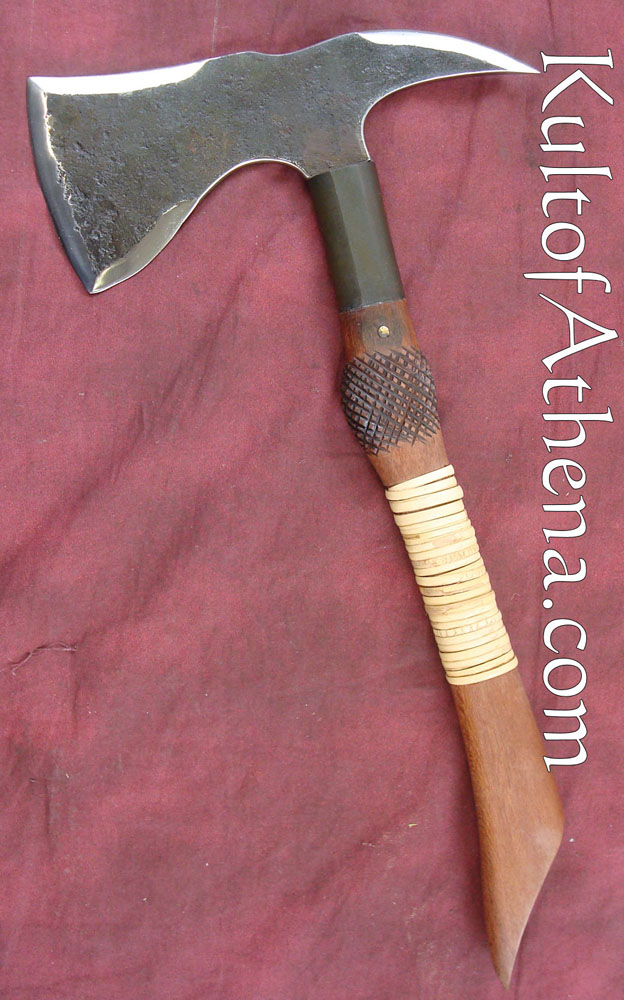


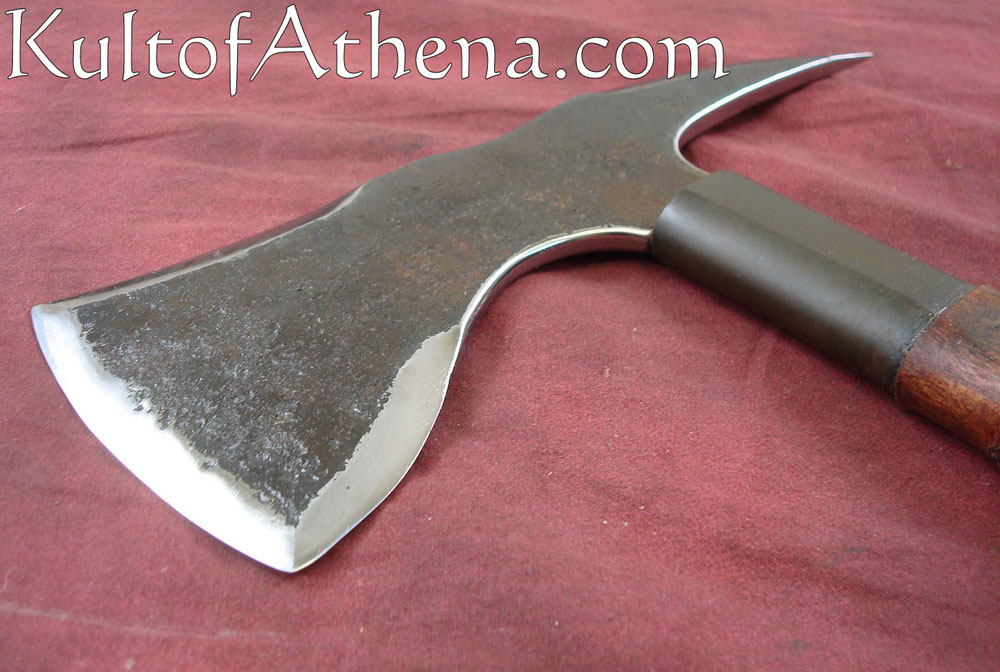
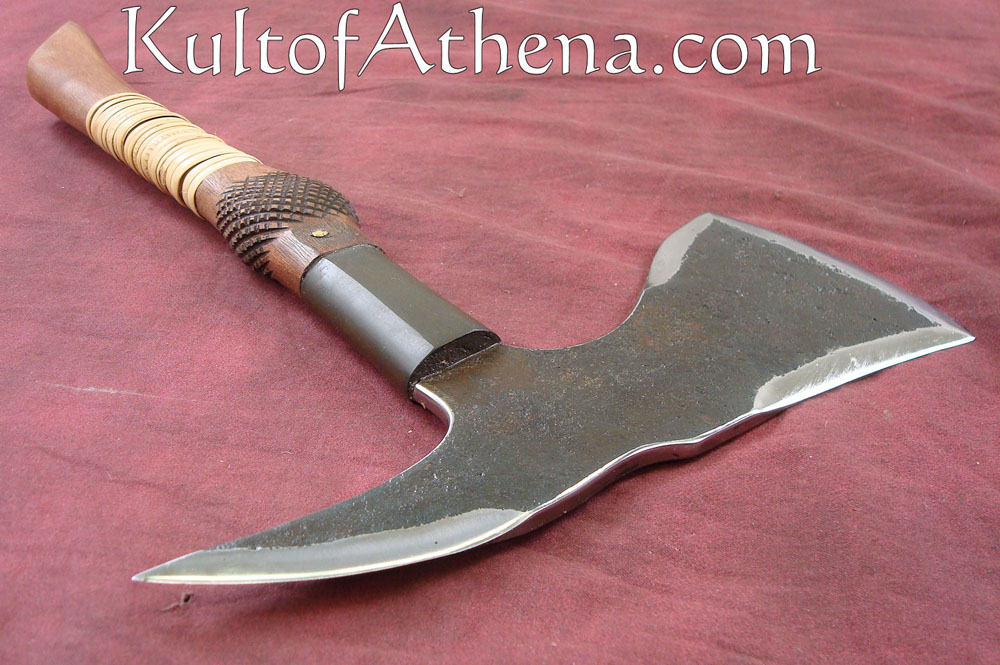
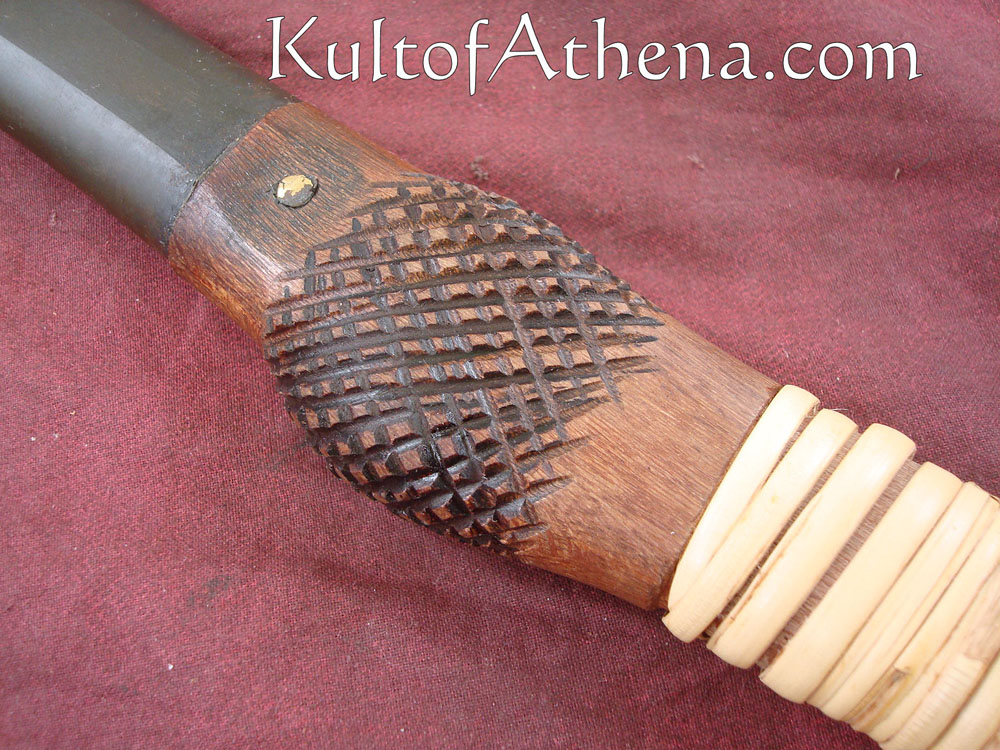

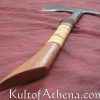
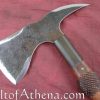
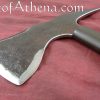
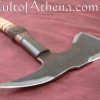
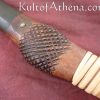
Reviews
There are no reviews yet.